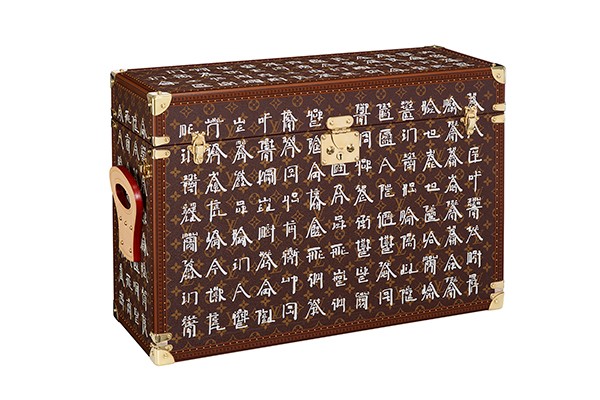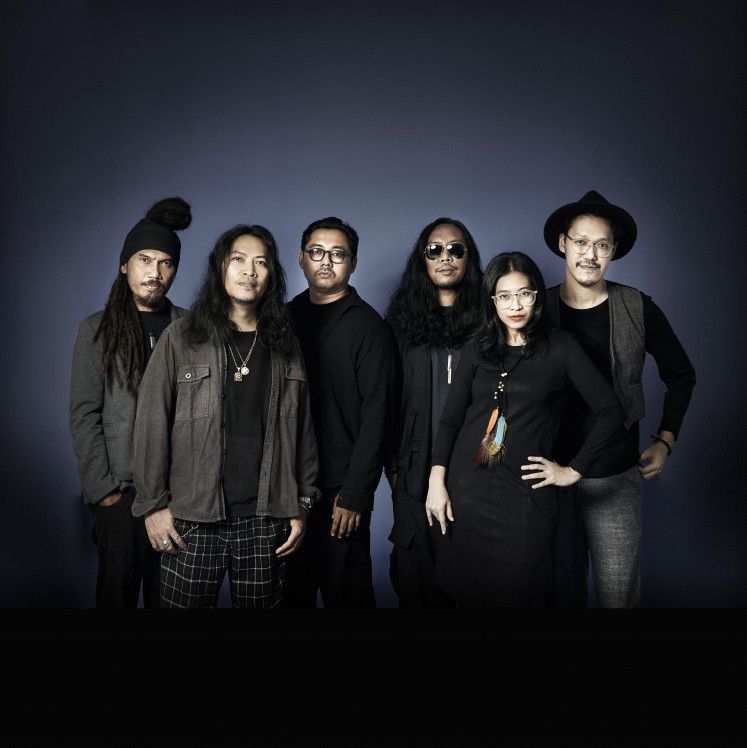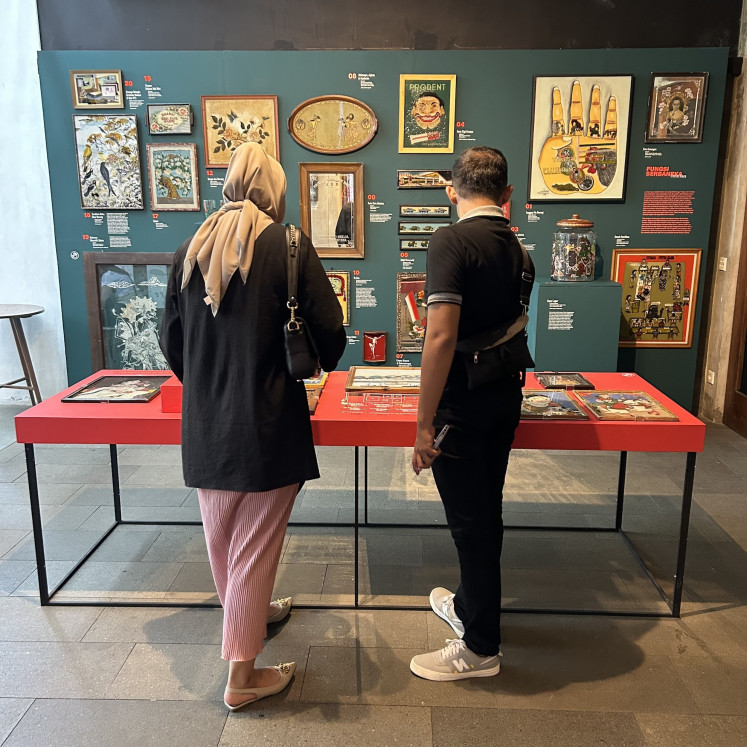Louis Vuitton's Shanghai show to reveal the brand's history
An upcoming Louis Vuitton show in Shanghai will tell the story of the brand's history.
Change Size
 Chinese artist Xu Bing's English Square Word Calligraphy trunk for the show. (Louis Vuitton/China Daily/File)
Chinese artist Xu Bing's English Square Word Calligraphy trunk for the show. (Louis Vuitton/China Daily/File)
An upcoming Louis Vuitton show in Shanghai will tell the story of the brand's history, Chen Jie reports.
In 1835, a 14-year-old boy left Anchay, his native village in the Jura Mountains of eastern France, close to the country's border with Switzerland. He traveled on foot, reaching Paris two years later.
He was immediately hired as an apprentice by a company that manufactured boxes and other material used in packing everyday objects.
Nineteen years later, he founded his own company-Louis Vuitton-in the French capital.
Olivier Saillard, the former director of the Palais Galliera in Paris, was moved by the true story of Louis Vuitton, who left home very young and later established the fashion house and luxury-retail brand bearing his name. People forget the names behind brands, Saillard says, adding that he wanted to look back at the founder of the Louis Vuitton company.
As a result an exhibition, Volez Voguez Voyagez, a retrospective on both the founder and brand, was held in 2015 in Paris. It toured Tokyo the following year, and Seoul and New York last year. Now, the same display will be on at the Shanghai Exhibition Center from Friday to Feb 1, the exhibition's curator Saillard says.
"Having curated some 110 exhibitions about fashion, I was a little tired of dresses," says Saillard. "The idea of working around the trunks (for the Louis Vuitton exhibition)-an almost architectural object-attracted me."
He says people should understand that creating trunks is a craft born from a personal initiative.
Read also: Vying for Vuitton: China's e-commerce rivals seek luxury stranglehold
"I hope that when they visit the exhibition, they will have the impression of a journey, a dream."
Saillard spent six months at the Louis Vuitton archives in a Paris suburb to prepare for the exhibition. He approached the show with "a sense of fantasy, as if Tintin (the Belgian comic character) was the curator, to appeal to a younger audience".
The exhibition is likely to be an unusual journey for many visitors. They will first see a 1906 trunk, an iconic box that brings together all the elements of the Louis Vuitton identity-wooden struts, ribbon tufting, locks and the brand's monogrammed canvas. Then visitors will enter a space of wood.
"Of all the materials used in the manufacturing of a trunk, wood is the most important. Before arriving in a luxury boutique, a trunk passes through a wood workshop," Saillard says.
"It is also a reminder of the forest landscapes of Louis Vuitton's native land, Anchay."
Passing the wood workshop, visitors will see most of Louis Vuitton's classic trunks from 1854 to the present day. Some boxes are filled with clothes and other items of daily use that suggest old memories. It's as if the owners of the trunks had just left the room, Saillard says.
The other sections reflect different kinds of travel experiences: An expedition through Algeria, Mali and Congo; sea travel by yacht; a road trip with cars carrying wardrobes, picnic baskets and so on; and riding in steam vessels and on trains and aircraft.
"Louis Vuitton is closely linked to the evolution of transport, whether steam engines or the automobile," says Saillard.
For the "train" section, the exhibition's artistic director and set designer, Robert Carsen, has created an actual wooden compartment, inspired by the Orient Express, with images moving past windows.
"An exhibition should be like a journey in which the visitors want not only to learn but also to be inspired, touched," says Carsen.
"My challenge is not just to develop the right visual support for what the curator has chosen to present but also to help him develop and transmit his ideas."
After this section, visitors can see a room for "writing and music" with secretary trunks, writing desks and library trunks customized for such writers as Francoise Sagan and Ernest Hemingway.
"Louis Vuitton (the brand) accompanied those for whom writing was a necessity and a pleasure, before any means of modern telecommunication existed," Carsen adds.
Since the founding of the company, exacting customers have been able to place special orders to fulfill their personal purposes and dreams. It seems there is no fantasy that cannot be packed into something. Fragile musical instruments are probably some of the most difficult items to pack. Whether a violin, a guitar or a conductor's baton, cases were expertly designed by Louis Vuitton to safeguard the instruments.
The Shanghai exhibition has added a special section that tells the story of the brand in China.
Read also: Lagerfeld takes Chanel to beach as Vuitton boosts color
In 1907, Louis Vuitton was a partner in the first Beijing-Paris automobile rally, with the company's trunks and luggage serving as a natural partner for adventure. A year later, the French philanthropist Albert Kahn began an epic journey to photograph global cultures, stopping in China to capture many images. He commissioned a special trunk from Louis Vuitton for his equipment, which will be presented at the Shanghai exhibition.
In 1931, Louis Vuitton provided trunks for a rally across Asia, from the Mediterranean to Beijing. Over 100 trunks were created to suit aspects of this extreme journey, including a version of the famous "automobile trunk" launched a year before, which will be featured in Shanghai.
For the show, Louis Vuitton has commissioned Chinese artists Xu Bing and Ding Yi to create two trunks to highlight the links between the fashion house and Chinese culture.
Xu's trunk design has Chinese calligraphy-his signature style-and includes the English translation of contemporary Chinese poet Zhai Yongming's poem, In Ancient Times. Zhai gave Xu the poem as a gift some 14 years ago when Xu was traveling.
Xu says he accepted the work because he feels the fashion house has "a sense of romance", and it pursues quality while creating products and is mindful of social trends and tastes.
"That's also what I try to pursue," says Xu.
Ding's design is a cocktail-and-cigar trunk that also features his signature patterns. He followed personal interests while creating it.
"I love traveling and cigars, and I enjoyed designing a trunk that can pack cigars while traveling."









